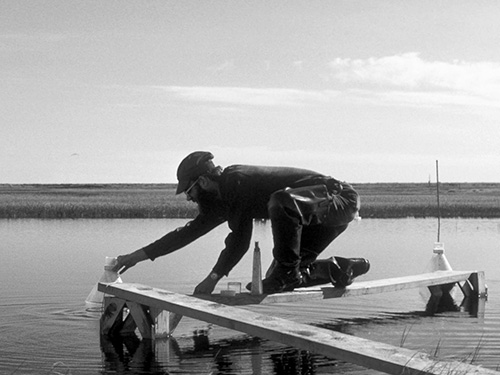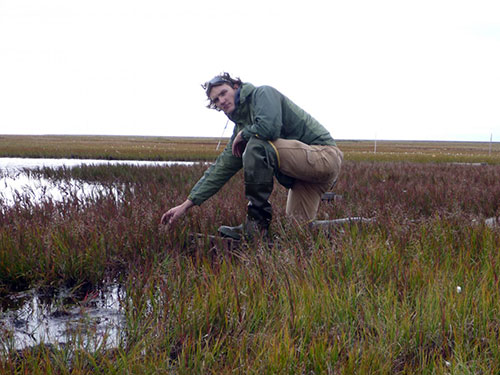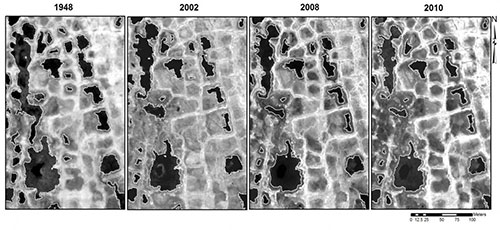
Ponds are disappearing in the Arctic
March 17, 2015
In a new study by University of Texas at El Paso researchers more than 2,800 Arctic tundra ponds in the northern region of Alaska's Barrow Peninsula were analyzed using historical photos and satellite images taken between 1948 and 2010. Over the 62-year period, the researchers found that the number of ponds in the region had decreased by about 17 percent, while pond size had shrunk by an average of one-third.
Mac Butler, Ph.D., samples an arctic pond in northern Alaska in August 1976.
The study, which has been accepted for publication in the Journal of Geophysical Research: Biogeosciences, was conducted by Andresen and Associate Professor of Biological Sciences Vanessa Lougheed, Ph.D.
36 years later in August 2012, Christian Andresen, Ph.D., revisits the same pond once sampled by Butler, but it looks completely different; the pond has become overcome by plant growth.
"Plants are taking over shallow ponds because they're becoming warm and nutrient-rich," Andresen said. "Before you know it, boom, the pond is gone." Click here or on the image for a larger view of these satellite images showing how Arctic ponds have slowly decreased in size since 1948.
"The role of ponds in the arctic is extremely important," he said. "History tells us that ponds tend to enlarge over hundreds of years and eventually become lakes; ponds shape much of this landscape in the long run, and with no ponds there will be no lakes for this region." Ponds in the Barrow Peninsula also serve as a major food source and nesting habitat for migratory birds, including certain waterfowl on the threatened species list, such as the spectacled eider (Somateria fischeri) and Steller's eider (Polysticta stelleri). If the aquatic system continues to shift toward a drier community, their vital summer feeding and nesting grounds could disappear, affecting the future of these and many other migratory species.
Edited by Mary Kauffman, SitNews
On the Web:
Source of News & Photographs:
|
||


